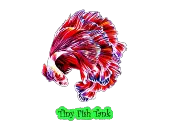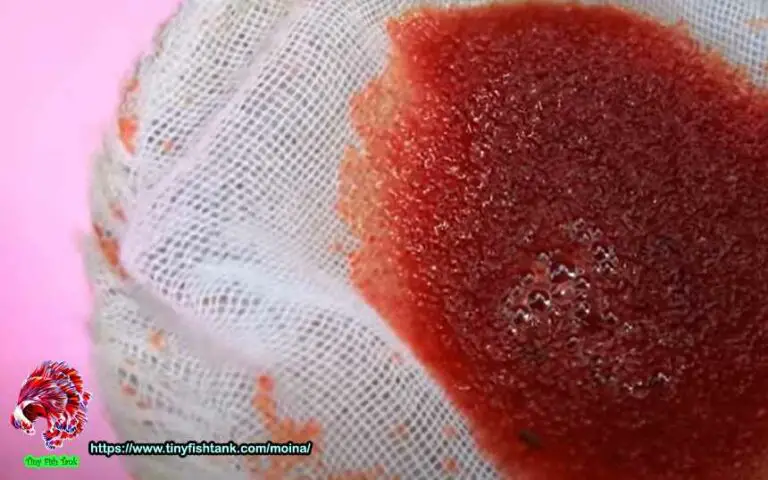Daphnia – History And Aquatic World of Water Flea
Daphnia, commonly called water fleas, are minute crustaceans found in abundance in various freshwater habitats worldwide. Despite their diminutive size, these creatures play a crucial role in aquatic ecosystem balance. Their significance extends beyond their size, impacting everything from water quality to the intricate food webs that sustain life beneath the water’s surface.
When you check ponds, lake water, or paddy fields areas, it is hard to see them with the naked eye. But a closer look reveals an ecosystem teeming with life. Daphnia thrives within this microcosm, forming a vital link in the food chain.
Daphnia’s life begins with eggs hatching, each producing a tiny nauplius larva. These larvae are minuscule, and their journey from birth to adulthood is filled with challenges. They are learning about their environment and food availability in their early stages. Only a fraction of these hatchlings will survive to maturity, highlighting the importance of reproductive rates for species’ survival.
One of their most striking features is their compound eyes. This complicated structure allows them to perceive the world differently than humans. Their eyes can detect changes in light intensity, helping them avoid predators and find optimal light conditions for survival.
Daphnia’s ecological significance cannot be underestimated. As filter feeders, they consume algae and other microscopic organisms, controlling the balance of phytoplankton populations. Their grazing prevents excessive algal blooms, ensuring aquatic ecosystem health.
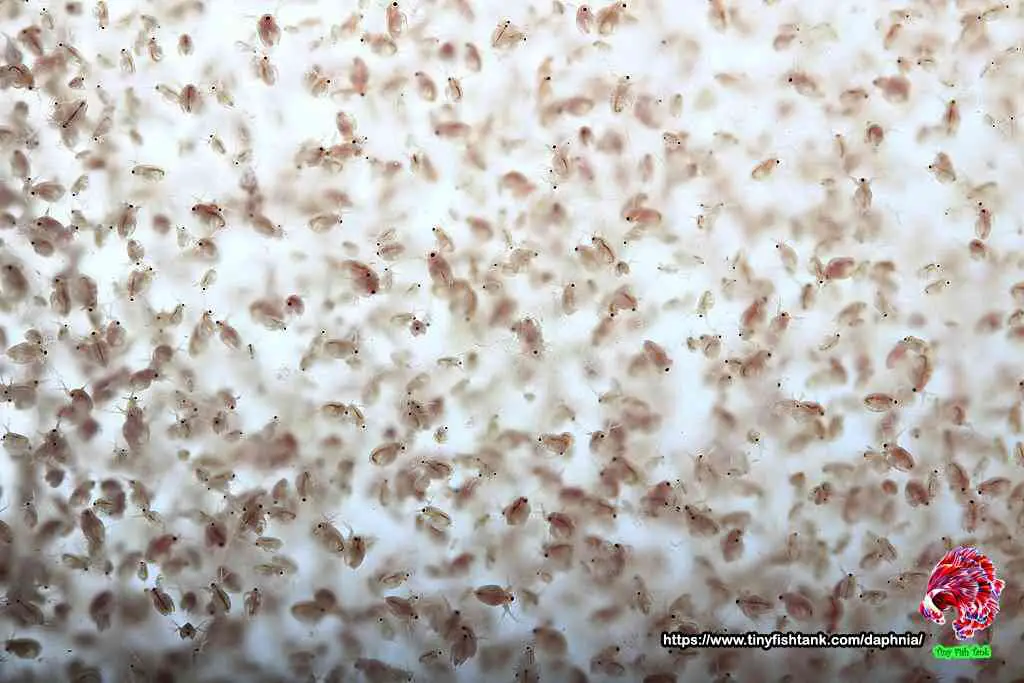
Daphnia is an essential food source for aquatic organisms, including small fish and other invertebrates. When faced with environmental stress or adverse conditions, Daphnia can experience sexual reproduction, producing inactive eggs that remain viable until conditions improve. This adaptive strategy ensures species continuity in challenging times.
Daphnia actively participated in nutrient cycling in aquatic environments. By consuming algae, they assimilate essential nutrients present in these microscopic plants. When they defecate or die, these nutrients are released into the water, enriching them with vital elements like phosphorus and nitrogen.
These nutrient-cycling processes are necessary for the growth of aquatic plants and other microorganisms, ensuring the food web’s continuity and the ecosystem’s overall health.
Table of Contents
- History of Daphnia
- Life Cycle of Daphnia: From Birth To Reproduction
- Hatching – The Beginning of Life
- Maturity And Reproduction Process
- Daphnia Survival Strategy
- Daphnia’s Diet and Feeding Habits
- Daphnia nutritional value
- Feed Daphnia to Aquarium fish
- Daphnia alternatives
- Frequently asked questions and answers
History of Daphnia
Daphnia gained more attention from naturalists and scientists in the 18th century. The Swedish naturalist Carl Linnaeus (1707-1778) was instrumental in organism classification. He categorized Daphnia under the genus Daphnia within the family Daphniidae in his work “Systema Naturae” (1758), laying the foundation for modern taxonomy. Linnaeus’s contributions allowed scientists to organize and identify various species systematically.
The 19th century saw significant advancements in microscopy and freshwater organism study. Several notable scientists contributed to Daphnia’s understanding during this period. The German naturalist Christian Gottfried Ehrenberg (1795-1876) discovered Daphnia and other microscopic organisms. His research relieved light on Daphnia’s ecology and biology.
Life Cycle of Daphnia: From Birth To Reproduction
In Daphnia, life follows a remarkable cycle, teeming with adaptations and survival strategies. Daphnia multiplies fast and reproduces continuously. There are usually between 0.5 millimeters and 1 centimeter in size, it is transparent, and it has a lifespan of approximately 10 to 30 days.
Daphnia requires dissolved oxygen in the water to survive; the optimal level is between 5 and 10 mg/L. If the oxygen level drops below this range, Daphnia may become stressed or die due to oxygen deprivation. As well as they can tolerate a wide range of pH levels, but the optimal range is between 6.5 and 8.0.
Daphnia are ectothermic organisms that regulate their body temperature by their environment. They can sometimes survive in colder or warmer waters, but the optimal range is 8 to 22 degrees Celsius (64 to 72 degrees Fahrenheit).
Hatching – The Beginning of Life
1. Eggs
Daphnia’s life begins with hatching inactive eggs, also known as ephippia. Adult females produce these eggs under specific environmental conditions. These ephippia act as protective casings, enabling the eggs to withstand challenging conditions such as drought or extreme temperatures.
When favorable conditions return, the ephippia hatch, releasing tiny nauplius larvae into the water. These larvae, provided with their first set of antennae, begin their survival quest.
2. Larvae
The Nauplius larvae venture on a perilous journey from birth to adulthood. They must fend for themselves at this stage, relying solely on the egg yolk’s nutrient reserves to fuel their growth.
Their small size makes them helpless to many predators, ranging from other aquatic invertebrates to small fish. Many larvae fall victim to predation, and only a fraction survive to progress in their life cycle.
3. Molts
As the Nauplius larvae grow and develop, they undergo a series of molts, shedding their exoskeletons to accommodate their growing size. The molting process is essential for Daphnia’s growth, enabling them to outgrow their exoskeletons and develop stronger bodies.
Daphnia is particularly vulnerable following molting, as their soft exoskeleton leaves them defenseless against predators. Finding hiding places and evasive tactics becomes crucial for their survival.
4. Juveniles
After several molts, larvae transition into juveniles, developing more mature structures and features. Their carapace becomes more noticeable at this stage, and they develop a second set of antennae, providing improved sensory capabilities. Juveniles continue developing, honing their feeding skills, and adapting to their environment.
Maturity And Reproduction Process
As juveniles mature, their bodies experience significant changes in preparation for reproduction. Reproduction in Daphnia is an adaptation marvel. In most species, females reproduce primarily through parthenogenesis, producing female offspring without fertilization. This unique ability allows Daphnia populations to increase rapidly under favorable conditions, making them efficient colonizers of new habitats.
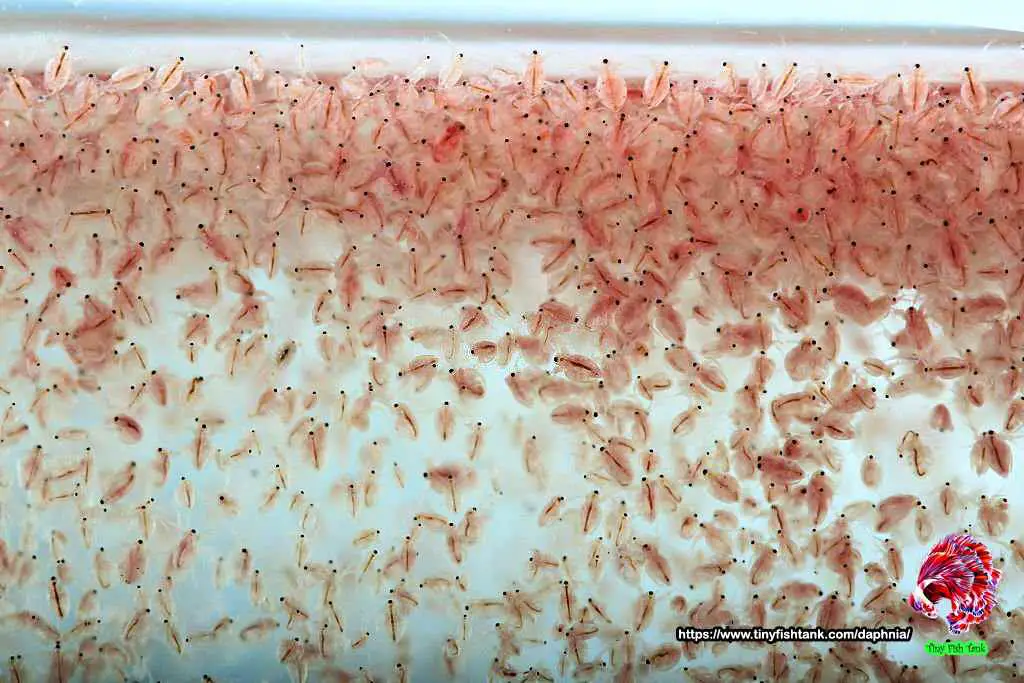
Female Daphnia can begin reproducing at 5–10 days and will continue to produce every 3–4 days after that. However, when faced with environmental stress or predators, Daphnia switches to sexual reproduction. In this process, females produce haploid eggs, which haploid sperm released by males then fertilize. The fertilized eggs form dormant ephippia, completing the cycle of life and ensuring the species’ survival in times of adversity.
Daphnia’s life cycle is a story of continuity and renewal, perpetuating the species and playing an integral role in the grand scheme of the aquatic ecosystem. Their importance is in maintaining the delicate balance of life beneath the water’s surface.
Daphnia Survival Strategy
Life in aquatic ecosystems is unpredictable. When conditions become unfavorable, Daphnia uses a remarkable survival strategy called diapause. During diapause, specific individuals develop inactive forms that withstand harsh conditions. These dormant forms sink to the bottom of the water body and wait for more favorable times before resuming their active life.
Diapause safeguards against unfavorable seasons, predators, and other threats. When conditions improve, dormant individuals resume their life cycle, ensuring species’ survival and resilience.
Daphnia’s Diet and Feeding Habits
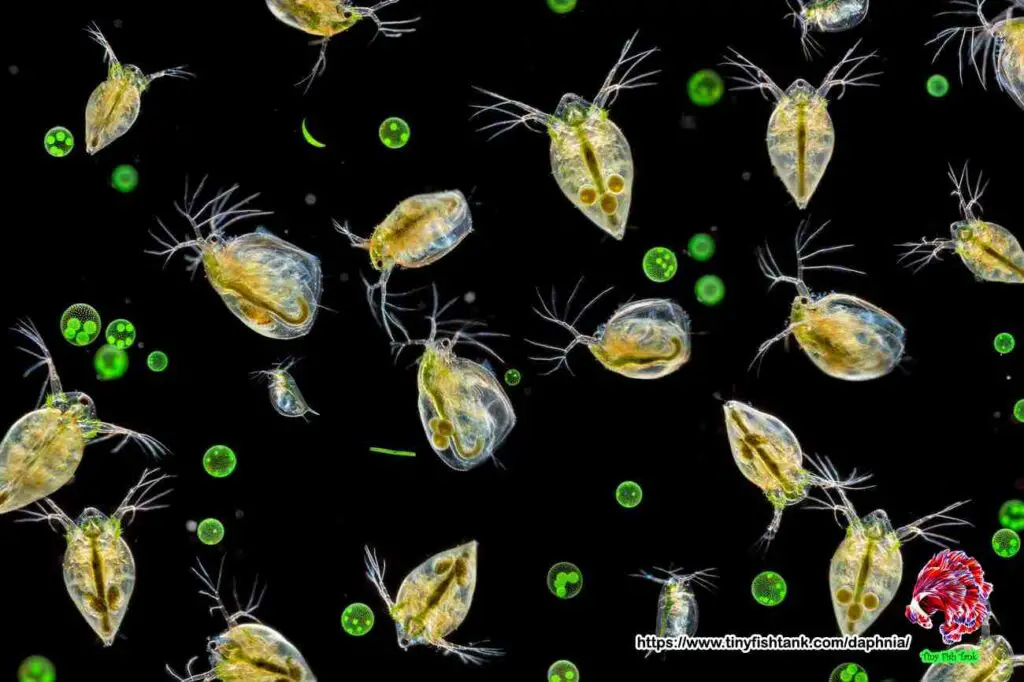
Algae: A Vital Nutrition Source
Daphnia’s diet includes algae, microscopic plant-like organisms that flourish in aquatic environments. Phytoplankton, a mixed group of algae, forms a significant portion of their diet.
Daphnia’s algae selection varies depending on available species and environmental conditions.
They prefer certain types of algae, consuming those that provide optimal nutritional value and energy. This selective feeding influences phytoplankton communities, playing a key role in preventing algal blooms.
Daphnia’s food menu changes as the seasons change and environmental conditions fluctuate. In warmer months, when algae spread, Daphnia tends to eat algae as their food.
However, algae become insufficient during colder months or in nutrient-poor environments, and Daphnia adapts accordingly. In response to these lean times, they shift their dietary preferences, consuming other microscopic organisms available in the water column.
Bacteria and Detritus
Beyond phytoplankton, Daphnia also consumes bacteria and detritus present in the water. Bacteria-rich particles offer valuable sources of essential nutrients, while detritus comprises rotting organic matter that undergoes decomposition.
Daphnia contributes to nutrient recycling within the ecosystem by consuming bacteria and detritus. As these water fleas filter-feed on bacteria and detritus, they release nutrients back into the water through their excretion and egestion processes, enriching the environment for other organisms.
Daphnia nutritional value
It is important to remember that Daphnia’s nutritional content can vary depending on its life stage, diet, and other environmental factors such as temperature. Daphnia’s primary value is its use as a food source for other organisms in aquatic ecosystems. This contributes to the overall health and balance of those systems.
Daphnia nutritional value table
| Nutrient | Amount per 100g (approx.) |
| Protein | 50% |
| Carbohydrates | 18% – 20% |
| Fat | 2% – 5% |
| Vitamins | Vitamin A, B-complex vitamins (B1, B2, B6, B12), Vitamin D, Vitamin E, Vitamin K |
| Minerals | Calcium, Magnesium, Potassium, Phosphorus, Iron |
| Omega-3 Fatty Acids | Varies (generally present in small amounts) |
Feed Daphnia to Aquarium fish
You can feed these water fleas easily to your fish tank. Fish like to eat live fish feed because they chase and hunt. So you can feed Daphnia twice a week minimum to your fish tank. Don’t overfeed water fleas to your fish. Ensure to provide other live feeds and pallet types of fish food because different fish foods have different nutritional values.
You can feed Daphnia many fish types, and here are a few of them.
- Tetra fish
- Tigerbarb fish
- Angle fish
- Guppy fish
- Molly fish
- Glo tetra fish
- Danios
- Zebrafish
- Betta fish
- Bumblebee Goby fish
Daphnia alternatives
Daphnia is rich in protein food, but sometimes you need to find alternatives for these water fleas. According to your requirement, there are several alternatives in the aqua market, and you can feed them quickly to your pet fish.
- Bloodworms
- Moina
- Tubifex worms
- Mosquito Larvae
- Black worms
- winger Eels
- Micro Bread worms
Frequently asked questions and answers
Does Daphnia bite?
No. These water fleas cannot bite humans. Also, they cannot live without the water. So you can use them without using any special tools.
Are Daphnia expensive fish food?
When you compare bloodworms or tubifex worms, these water fleas are not expensive. But the cost is nearly the same as the monia feed.
Will chlorine kill Daphina?
Yes. They cannot live in chlorine water and need algae mixed-age water. They can live in polluted water mixed with algae, but they are not able to survive in tap water or chlorinated water.
Where can I buy Daphnia near me?
Daphnia is live fish feed; you cannot buy it as dried fish feed. So you should visit your nearest pet shop to buy this live feed. Please do not buy this from online selling websites like eBay or Amazon because they cannot send them as live fish feed.
